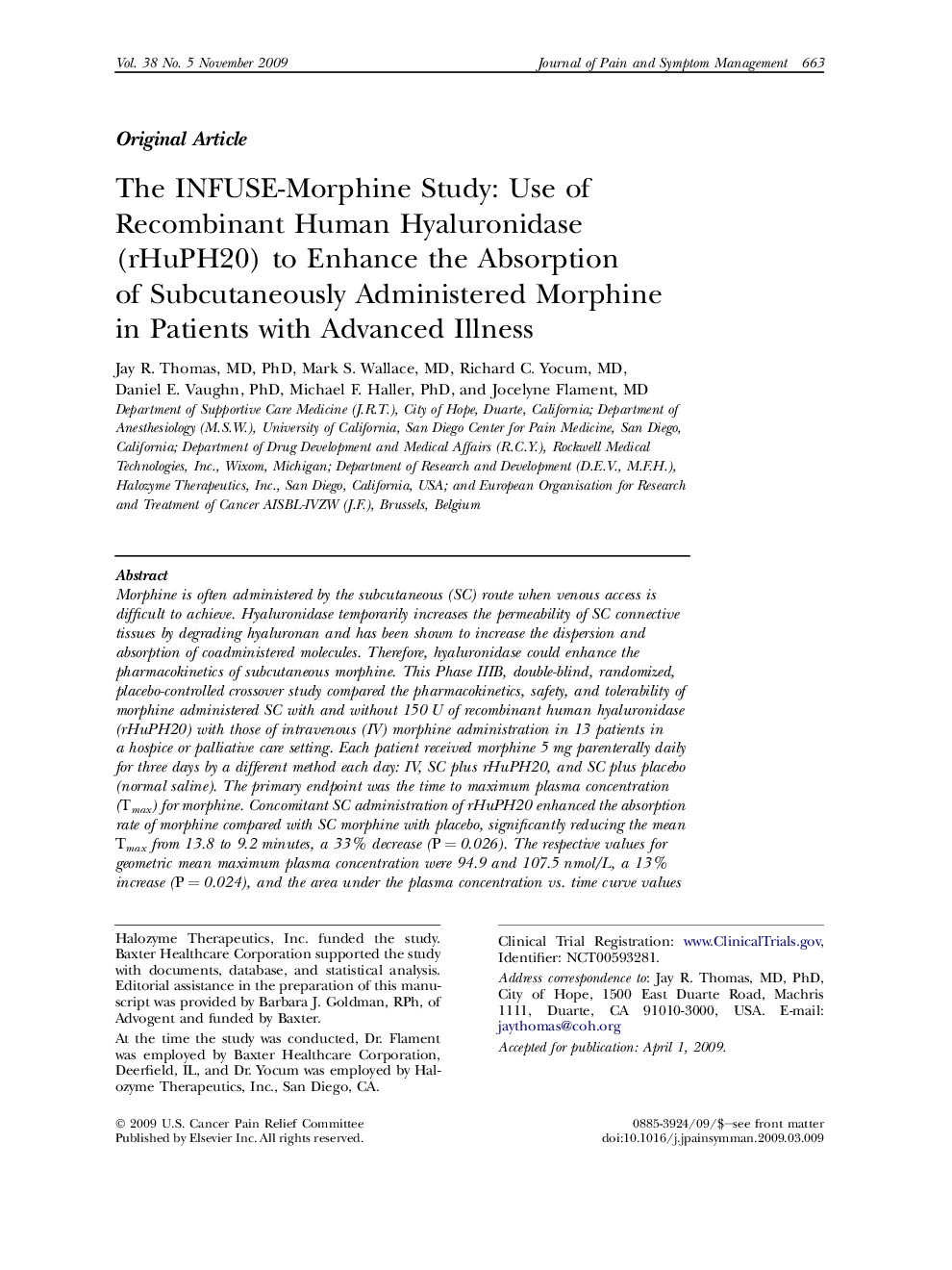| کد مقاله | کد نشریه | سال انتشار | مقاله انگلیسی | نسخه تمام متن |
|---|---|---|---|---|
| 2730586 | 1147255 | 2009 | 10 صفحه PDF | دانلود رایگان |

Morphine is often administered by the subcutaneous (SC) route when venous access is difficult to achieve. Hyaluronidase temporarily increases the permeability of SC connective tissues by degrading hyaluronan and has been shown to increase the dispersion and absorption of coadministered molecules. Therefore, hyaluronidase could enhance the pharmacokinetics of subcutaneous morphine. This Phase IIIB, double-blind, randomized, placebo-controlled crossover study compared the pharmacokinetics, safety, and tolerability of morphine administered SC with and without 150 U of recombinant human hyaluronidase (rHuPH20) with those of intravenous (IV) morphine administration in 13 patients in a hospice or palliative care setting. Each patient received morphine 5 mg parenterally daily for three days by a different method each day: IV, SC plus rHuPH20, and SC plus placebo (normal saline). The primary endpoint was the time to maximum plasma concentration (Tmax) for morphine. Concomitant SC administration of rHuPH20 enhanced the absorption rate of morphine compared with SC morphine with placebo, significantly reducing the mean Tmax from 13.8 to 9.2 minutes, a 33% decrease (P = 0.026). The respective values for geometric mean maximum plasma concentration were 94.9 and 107.5 nmol/L, a 13% increase (P = 0.024), and the area under the plasma concentration vs. time curve values were 7.7 and 7.2 μmol⋅min/L (P = 0.23). Morphine plus rHuPH20 appeared to be safe and well tolerated. In patients requiring opioid analgesia, SC morphine plus rHuPH20 provides pharmacokinetic characteristics that are superior to those of SC morphine alone. These positive results warrant further studies on analgesic efficacy of morphine delivered with rHuPH20.
Journal: Journal of Pain and Symptom Management - Volume 38, Issue 5, November 2009, Pages 663–672